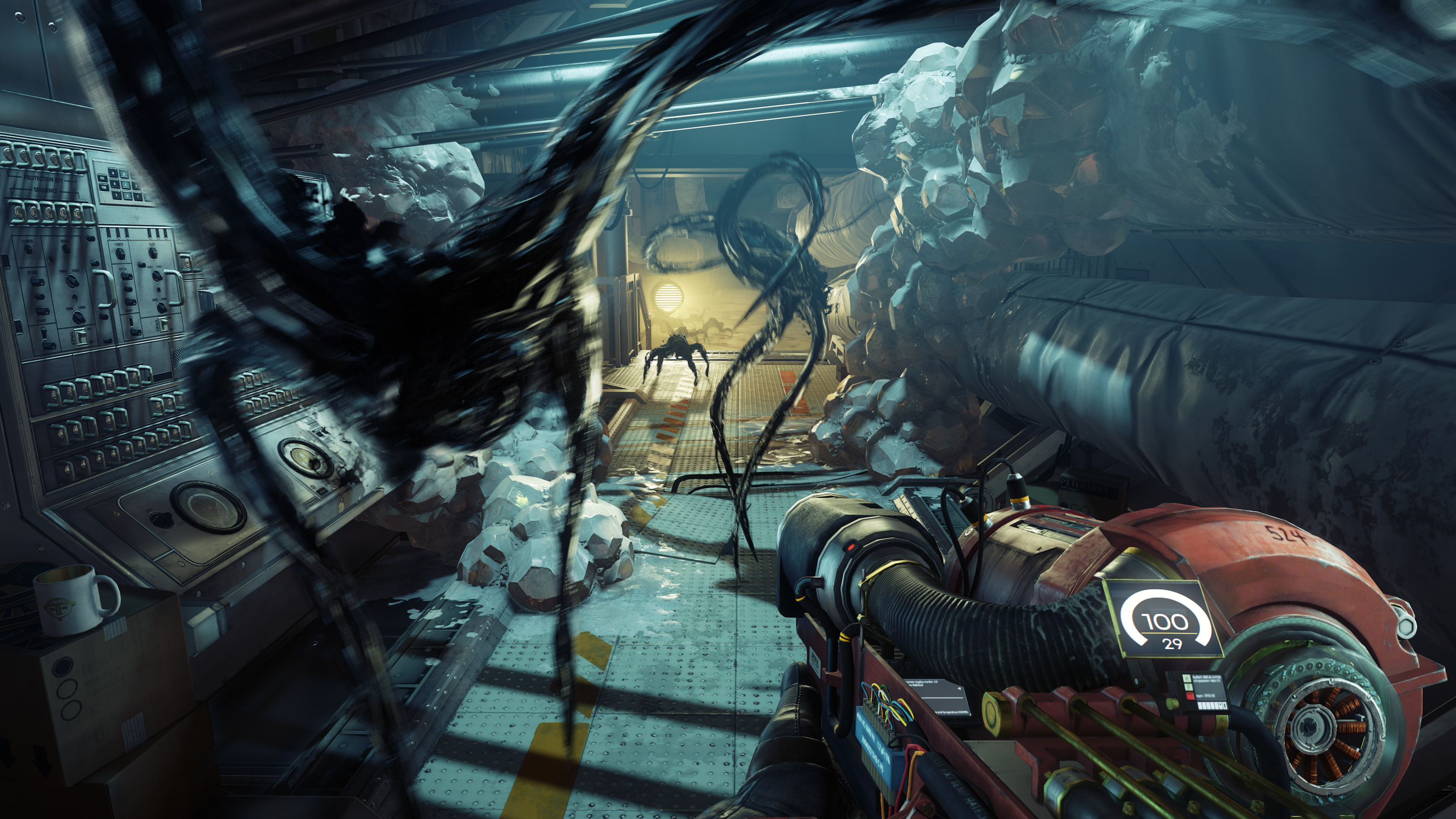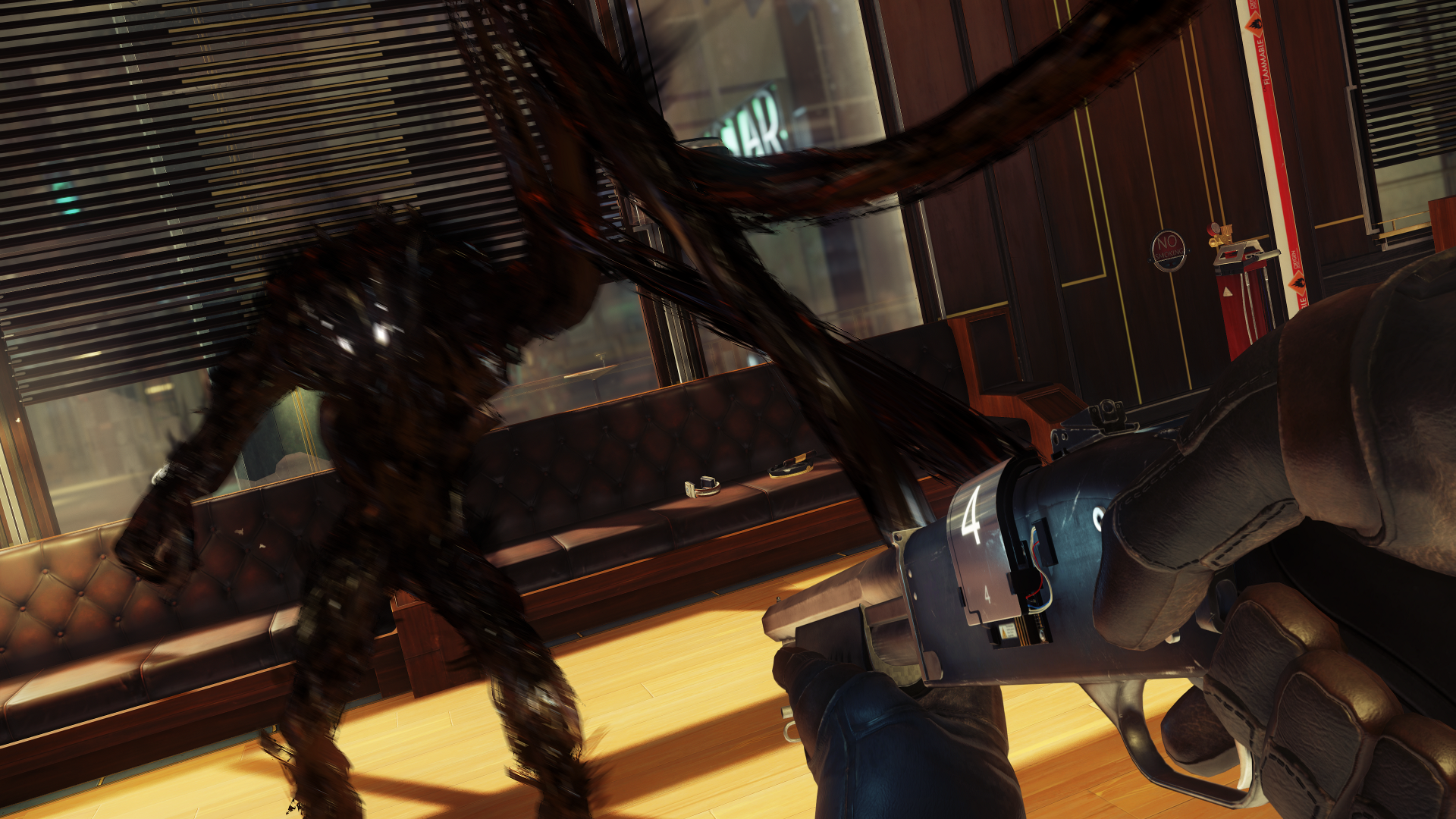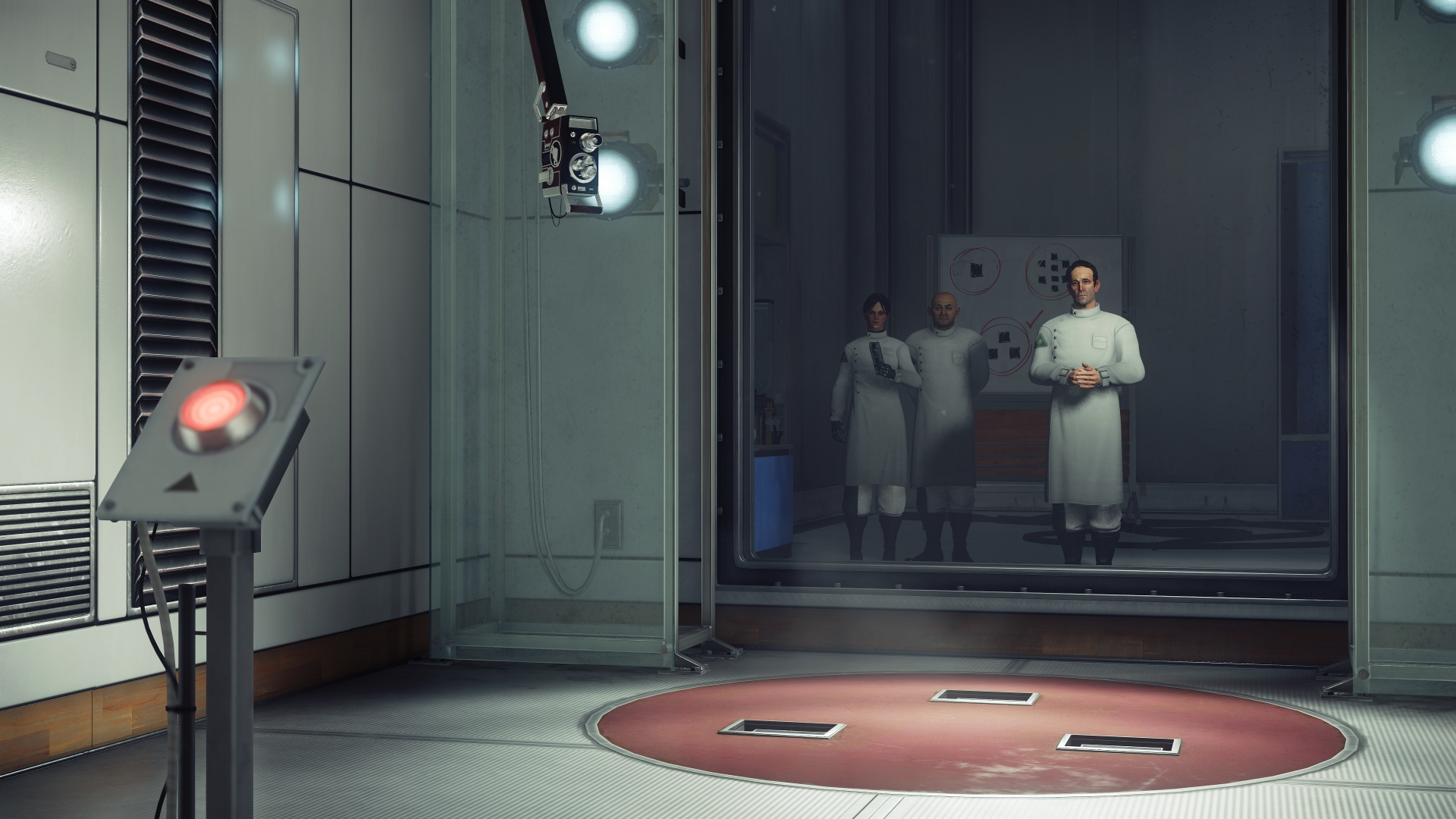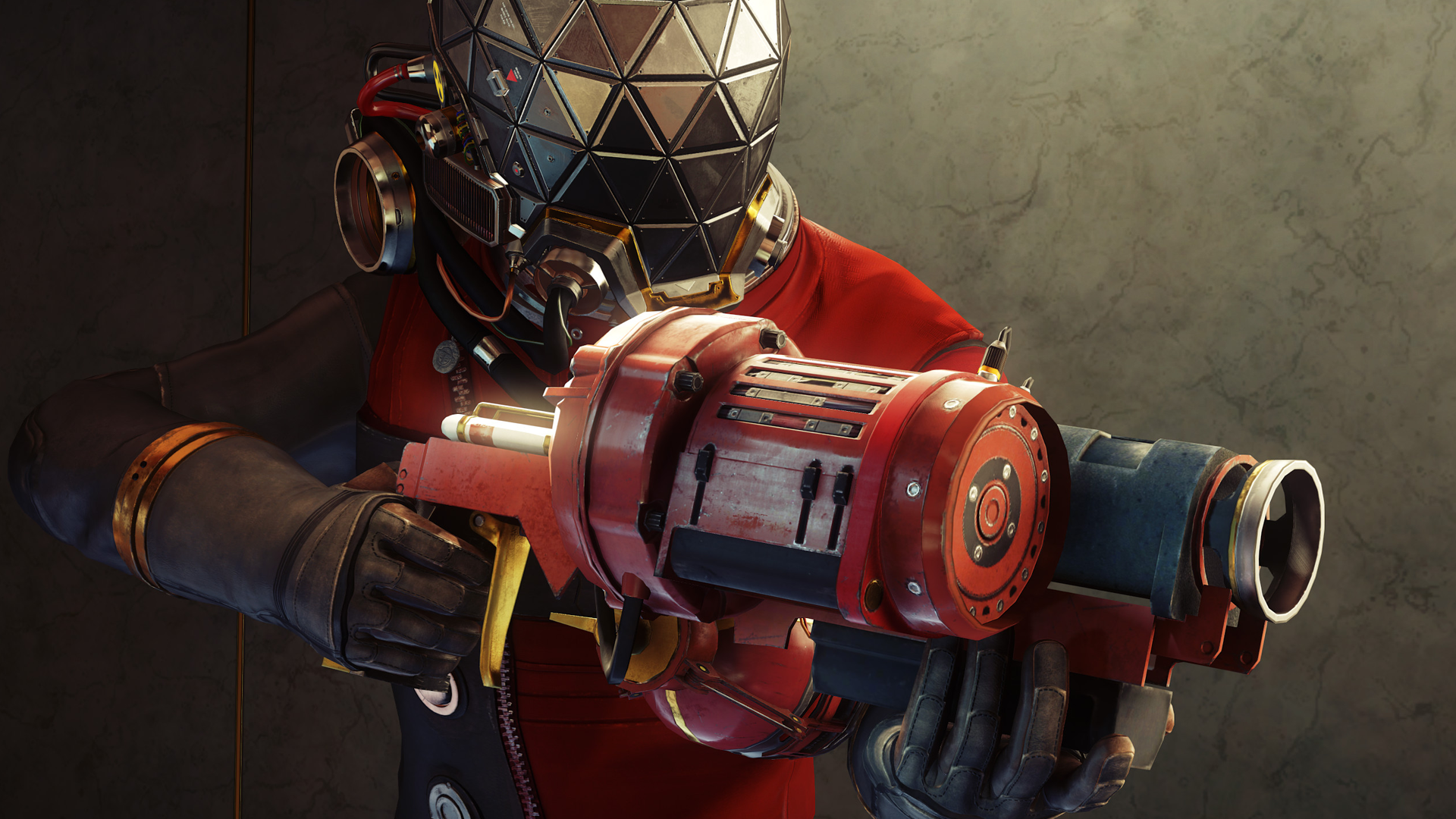6 reasons Prey belongs in the legendary System Shock family

BioShock and System Shock 2 are right up there with Half-Life 2 and Deus Ex in the upper echelons of genre-defining FPS thrillers. Both games throw you into confined, dangerous, fantastical spaces and let you roam free, giving you all the agency when it comes to learning how to survive and discovering how this chaotic world came to be. That same framework is what drives Prey, the upcoming sci-fi shooter from Dishonored developer Arkane Studios, and its callbacks to the standout 'Shock games suggest it could join their ranks in FPS legend.
Prey's futuristic, life-threatening setting aboard the overrun Talos 1 space station has obvious parallels to System Shock 2's Von Braun starship, but the promising similarities run so much deeper than the surface-level premise. And the themes that drive BioShock's unforgettable, undersea city of Rapture can be seen in Prey's frightening, engrossing atmosphere. If you love BioShock and System Shock - like the majority of people who've played them - here are some of the reasons you're almost guaranteed to love Prey, too.
This is best-in-class world-building
BioShock, System Shock, and Prey all pull you in with their stunning sense of atmosphere. Instead of abstract game worlds where anything goes, their settings feel lived-in, as if every object or piece of furniture had a place in someone's daily routine. The many computers you'll find around the Talos 1 are all tied to someone's personal account, with passwords that need cracking and emails you can peruse for hints or bits of backstory. Audio logs, a conventional storytelling method inherent to this brand of FPS, give you an optional way to dig deeper into these virtual lives without demanding that you listen to all - or any - of them to make progress.
Every bit of Prey's world is made with purpose, from the eye-catching art deco posters adorning the station, to the decorative plants in some offices that double as crafting materials. Even the tooltips of the Neuromod upgrades have ingenious canonical explanations. Take the Toughness Neuromod, which boosts your health total and increases your lifespan by 25 years. That latter bit has no purpose in-game, obviously - but it's a brilliant explanation for why such a Neuromod would exist in a believable world.
You have the freedom to pursue any playstyle

Those same Neuromods are what let you specialize your hero, beyond the decision to play as a male or female version of Morgan Yu. Using this intimidating eyepiece sounds harrowing, given that it stabs data directly into your brain via huge needles, but the payoff is worth it: new skills that strengthen your preferred playstyle, akin to the upgrades of System Shock and the Tonics of BioShock. Beyond opting for a head-on or stealthy offense when you need to dispatch enemies, your choice of Neuromods can open new avenues for exploration, crafting, and general survivability.
The three human-based branches of Prey's six skill trees are the Scientist, Engineer, and Security paths, with unique specializations that echo the O.S.A. Agent, Navy, and Marine classes of System Shock 2. Scientists can bolster their healing abilities through a knowledge of medicine or sharpen their computer hacking skills, Engineers know how to modify gear, repair machinery, and use a wrench like nobody's business, and Security experts have combat prowess, firearm proficiency, and the physical strength needed to hurl heavier objects. You have the freedom to pick and choose abilities from each tree, but each choice is meaningful - because even if you snag every Neuromod in the game, you won't have the means to unlock everything.
Every living thing on the ship is part of a greater ecology

The twisted denizens of Rapture and the Von Braun are a huge part of what made those settings so memorable (and traumatic in the best way possible). The worm-like aliens aboard the Von Braun start out as disgusting, mostly harmless grubs, but can take over human hosts to become mutated Hybrids that'll hunt you down. Rapture's Splicers are like deranged, deformed drug addicts who will kill you on sight for sport, but even they live in fear of the hulking Big Daddies. Similarly, the Typhon aliens in Prey are part of a larger ecosystem, and you're basically at the bottom of the food chain.
Sign up to the GamesRadar+ Newsletter
Weekly digests, tales from the communities you love, and more
Mimics are the most common killers on Talos 1: spider-like creatures that scurry around on four legs and shapeshift into normal-looking objects to lure you into inattention so they can spring-attack onto your face. Their big brothers are called Phantoms, bipedal Typhons that have enveloped their victim's bodies and can phase through floors and walls to evade your would-be killing blow. You'll face off against multiple types of Phantoms later on, and just like the deeply disturbing lines Splicers would mutter to themselves while hunting you down, Phantoms will blurt out random sentences lingering in the memories of their host's brain. Those distorted bits of dialogue will help you suss out Phantoms in your environment, even as they chill you to your core.
Though Talos 1 is overrun by aliens, Morgan Yu isn't the only survivor onboard. Astoundingly, every crewmember on the Talos 1 is a uniquely named NPC (including the bodies possessed by Phantoms), and the ship's log keeps track of whether every individual is living or dead. As you explore, you can peruse the list of crewmembers and actually track them down for the purpose of sidequests or simple curiosity brought on by an extra bit of lore. That kind of attention to detail is staggering in its scope.
The economy of items is crucial to your survival

System Shock 2's inventory acts like Deus Ex or Resident Evil 4: you've only got so much space, and what you decide to carry with you could very well save your life at some point. Prey's inventory is modeled in much the same way, where you might need to do a little item Tetris to make room for whatever invaluable piece of gear you've happened upon. But if something's not worth keeping, doesn't mean it's useless. Around the Talos 1, you'll find machines called Recyclers, which break down whatever you place in their bins into reusable raw materials. Like the Chemical resources you need to keep track of in System Shock 2, the way you manage your crafting materials in Prey is absolutely vital to your survival.
And while guns are a key part of your arsenal - Prey gives you a shotgun and pistol very early on - acting like this is a blast-everything-that-moves shooter will surely get you killed. Ammo starts out in relatively short supply, so its scarcity means your aim really needs to count if you face off against a Typhon worth shooting. That said, smart use of crafting or teching into the Security tree can help offset the lack of ammo - just another way Prey can adapt to your playstyle.
Paranoia and suspicion fuel the plot (and your actions)

When you're scared and alone in someplace unfamiliar, one question that can determine your life expectancy is: Who can you trust? If BioShock and System Shock 2 are to be believed, the answer is 'no one'. The deception inherent to the plot of both games puts you on edge every time someone new is chatting in your ear, and your suspicion fuels the plot twists that serve as the payoff to following along. Prey's premise - what we know if it, anyway - has already put forth a captivating mystery of who you can trust aboard the Talos 1. When a recording of your past self warns you about the people who should have your best interest at heart, it's hard to know what to believe.
That same sense of distrust and paranoia also plays into Prey's gameplay. When you walk into a room, you never know which of the seemingly innocuous objects scattered around could be a Mimic in disguise, just waiting to get the jump on you. That uncertainty and apprehension at picking up a coffee cup or approaching a simple chair creates a creeping sense of tension in every moment, which perfectly feeds into Prey's perilous atmosphere.
Fear eventually gives way to empowerment

Prey is not a horror game, despite the fear it initially instills in you. Though you start out with nothing but a heavy-duty wrench to defend yourself - a clear callback to BioShock and System Shock 2's starting weapons - eventually you'll find (or build) the tools you need to not only survive, but thrive. As with the 'Shock games, you step into Prey's world afraid and unarmed. But through experience, skillfully selected upgrades, and the acquisition of repurposed gear, you can turn the tables on your aggressors. It's as if you're telling the aliens "I'm not locked in here with you... you're locked in here with me."
Maybe you'll opt for a go-to attack, like isolating the Typhons with your foam-firing GLOO gun then smacking them with a charged-up wrench swing (just like System Shock 2). Or perhaps you'll hack into a turret, repair it, then carry it into dangerous territory with you using telekinetic abilities. You may cower in fear of the Mimics and Phantoms early on, but eventually, you'll discover the means to take the fight to them, which is one of the most empowering things Prey can do.
Lucas Sullivan is the former US Managing Editor of GamesRadar+. Lucas spent seven years working for GR, starting as an Associate Editor in 2012 before climbing the ranks. He left us in 2019 to pursue a career path on the other side of the fence, joining 2K Games as a Global Content Manager. Lucas doesn't get to write about games like Borderlands and Mafia anymore, but he does get to help make and market them.



